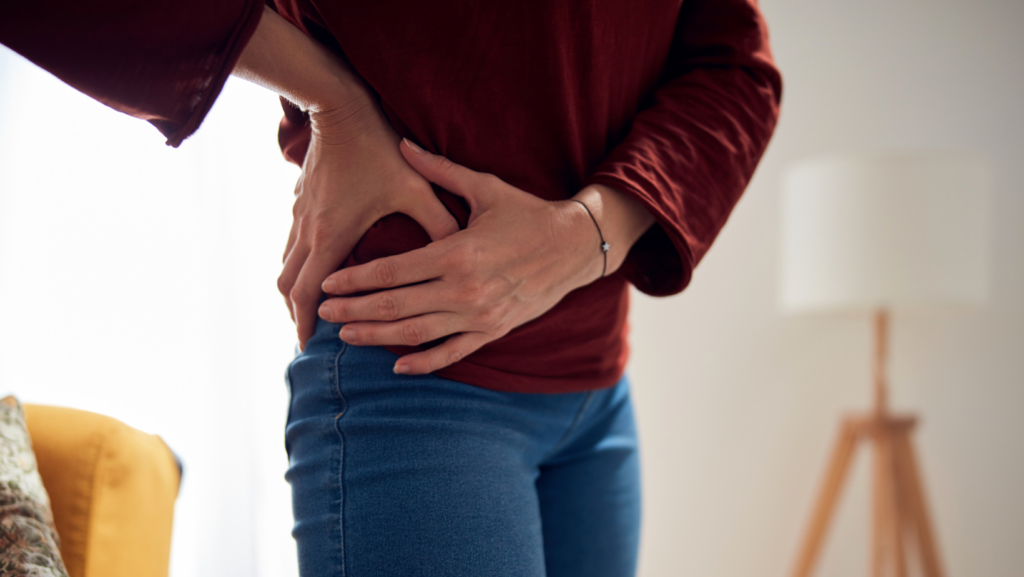
Hip pain is a common condition that can affect people of all ages. It can be caused by injury, arthritis, bursitis, and other medical conditions that can lead to inflammation or degeneration of the hip joint.
The most common symptom is a dull ache in the joint area that gets worse with movement. You may also experience stiffness or restricted movement when attempting to move your hips. In some cases, you may feel a sharp stabbing sensation in the joint as well.
If left untreated, hip pain can progress and lead to more serious complications.
Prolonged hip pain can lead to cartilage damage and bone-on-bone contact, increasing discomfort. Weak muscles and tendons may worsen the condition.
Seeking medical attention promptly is crucial to prevent complications. A doctor can diagnose and recommend a tailored treatment plan, which may include medication, physical therapy, lifestyle adjustments, or surgery.
These measures reduce long-term damage and alleviate current symptoms. Discussing concerns with your doctor ensures appropriate care, improving quality of life and mobility.
Exercise is one of the best treatments for hip pain, as it helps to strengthen and stretch the muscles around the hip joint. Regular exercise also helps improve flexibility, reduce inflammation, and promote good circulation in your hips.
It is important to remember that before starting any type of physical activity you should talk with a doctor to make sure it is safe for you to do so. If done incorrectly or strenuously, activities may cause more harm than good.
Therefore, it is important to start slowly and gradually increase intensity as tolerated. Additionally, if the hip pain persists despite self-care measures such as exercise, seeking professional help may be beneficial.
Here are 5 exercises that have proven to help with hip pain:
1. Hip Abduction: strengthens your glute muscles and helps to reduce hip pain. To perform this exercise, lie on your side with one leg up and the other bent at the knee. Push your lower leg away from your body as far as you can, then bring it back in. Repeat 10-15 times on each side.
2. Glute Bridges: strengthens your glutes, reducing hip pain. Lie on your back with knees bent, feet flat on the ground. Lift your hips by pressing through your heels and squeezing your glutes; hold briefly, then lower. Repeat 10-15 times.
3. Clam Shells: helps to strengthen the muscles around your hip joint, which can help reduce hip pain over time. To perform this exercise, lie on your side with both legs bent at the knee and feet together; lift your top leg up while keeping your feet together at the same time. Hold for 3-5 seconds before lowering back down; repeat 10-15 times on each side.
4. Prone Leg Raises: helps to strengthen the muscles of your hips and core, which can help reduce hip pain over time. Lie face down on a flat surface with arms extended out in front or crossed under the forehead. Hold your core tight and lift one leg off the floor as far as you can, keeping your foot flexed; hold for 3-5 seconds before lowering back down. Repeat this 10-15 times on each side.
5. Side-Lying Leg Raises: help to strengthen the muscles around your hip joint, which can help reduce hip pain over time. To perform this exercise, lie on one side with legs extended out in front of you and feet together; slowly raise one leg as far as it will go without pain or discomfort before slowly lowering it back down again. Repeat 10-15 times on each side.
How Physical Therapy Can Help With Your Hip Pain…
As physical therapists, we can help patients manage their hip pain in a natural way without resorting to surgery, injections, or medications.
We use evidence-based practices to assess the patient’s condition and develop an individualized treatment plan based on their unique needs.
Our treatments may include manual therapy such as joint mobilization and soft tissue massage, therapeutic exercises to improve strength and flexibility, balance training to reduce the risk of falls due to impaired coordination and control, gait analysis for those with difficulties walking or standing, lifestyle education on ways to cope with painful flares and chronic pain management techniques such as meditation and relaxation.
Are You Struggling with Hip Pain and Looking For Answers?
Empower PT & Pilates offers a Free Hip Pain Assessment, which is a great way to get the conversation started on the next steps in your treatment if you are experiencing pain.
We want to help, so contact our Arvada location today to schedule a time to come see us. Contact our team or schedule a Free Hip Pain Assessment so we can begin looking at different treatment plans for the pain you are experiencing.
All you need to do is tell us a bit about what’s going on through this quick form and we will have a conversation about how we may be able to help.
You can also give us a call at (720) 722-0685.
See you soon,
Dr. Casey
+ view comments . . .